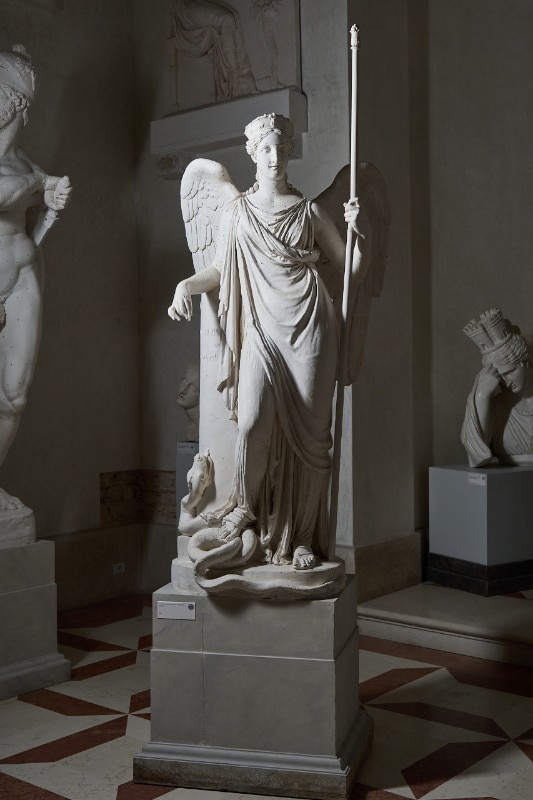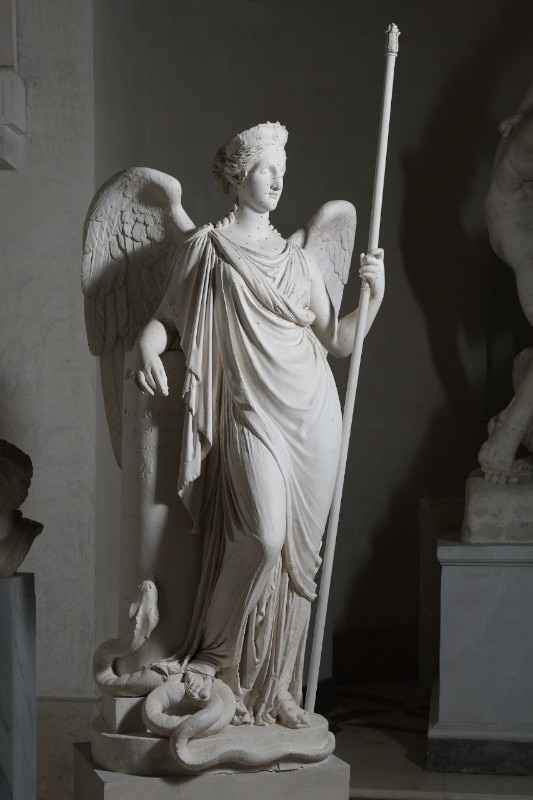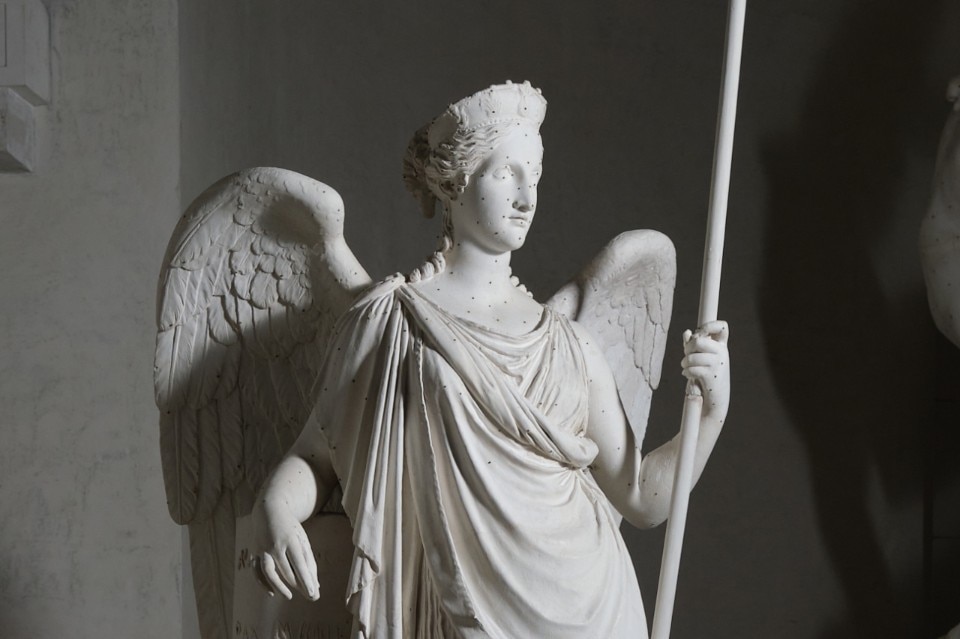In 1960, the Italian writer and pedagogist Gianni Rodari published a collection called Filastrocche in cielo e in terra (Nursery Rhymes in the Sky and on Earth).
“Who knows if the moon/in Kyiv/is as amazing/as the one in Rome,/who knows if it’s the same moon/or perhaps just a sibling…
“But it’s me, it’s me you’re seeing!”– it heartily protests –/did you think/I was a night cap/for wearing on your head?
And travelling up here/I shed light on one ad all/from India to Zaire/from the Tiber to the Dead Sea,/my rays need no passport/to travel freely”. (Translation by Matilda Colarossi)
These are words of freedom, of peace, of worlds where the gaze of an external subject is represented as equal and free.
Not only the literature of the past interprets the present – art does it, too. Antonio Canova summarised the idea of peace and the history of a nation in a sculpture called The Peace of Kiev.

In 1805, Russian Nikolay Rumyantsev asked the artist from Possagno to create allegorical sculpture made of white marble to enrich the main hall of the St. Petersburg palace where he lived. Canova then tried to lend himself to history, which was unusual for him, by designing a different thought – one that would go beyond mere representation. He sculpted a winged figure, haughty and magnificent but above all charged with symbolic values.
A Victory/Nemesis, a goddess of justice with large wings where the strong and elegant draperies outline the shape of a perfect body, thus mixing the concept of classical beauty with that of justice.
Paradoxically, Canova attempted to mix cultures and religions, as if peace could also start there. He thus placed at the woman’s feet a serpent that in ancient Rome symbolised war, but above all was an emblem of evil for the Christian religion. A Madonna, a saint, a goddess, a unique principle of equality, prosperity, and beauty. A Venus that encapsulated the true concept of love, a concrete spiritual and temporal peace, as relevant today as ever.

The sculpture also aimed at paying homage to the Rumyantsev family, which had ended three wars – with Sweden, Turkey and Sweden again, thus changing the history of Russia.
The sculpture was moved from the Rumyantsev Palace, a wonderful example of neoclassical architecture with monumental Corinthian columns on the façade and a Parnassus in the tympanum, to the Khanenko National Museum in Kyiv in 1953. Today it has been rescued from bombing and destruction.
A nation can be recognised by its history, its architecture and the art of which it is partly the patron. We are what we live by, what comes from our past, and a few days after the great celebration, or show, of 9 May in Russia, the anniversary of the surrender of Nazi Germany to the Allies at the end of the Second World War in 1945, this sculpture seems all the more necessary.


